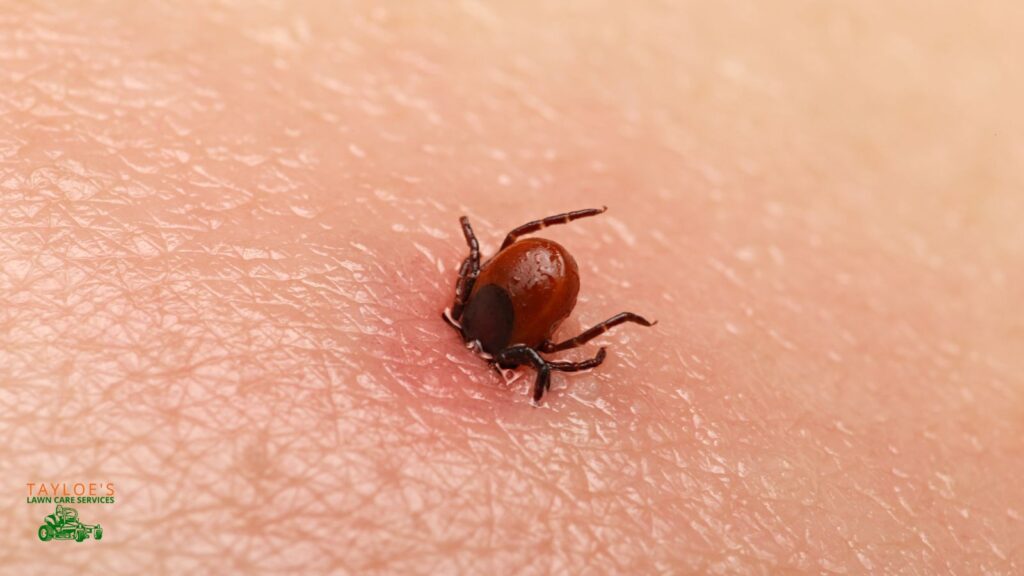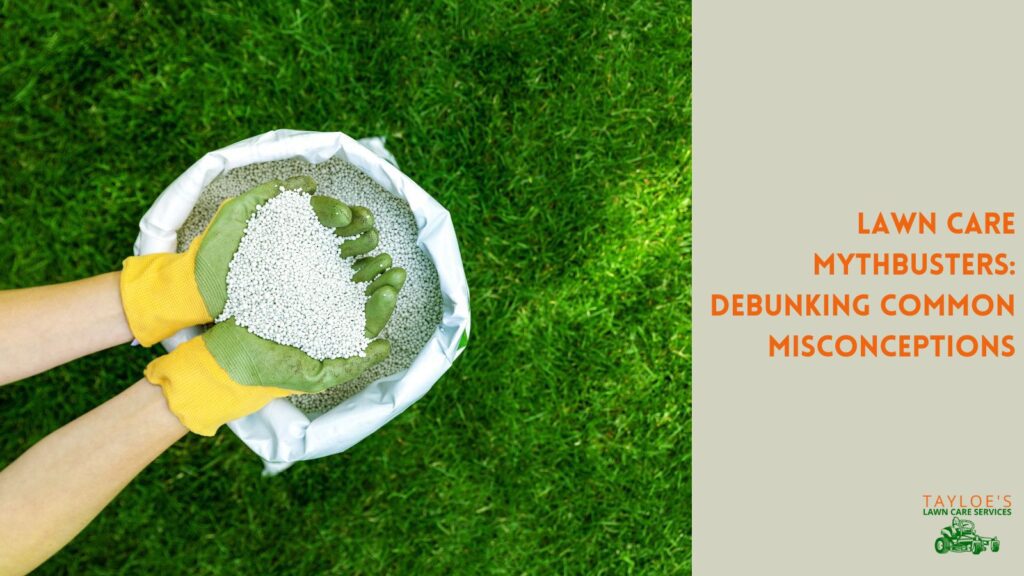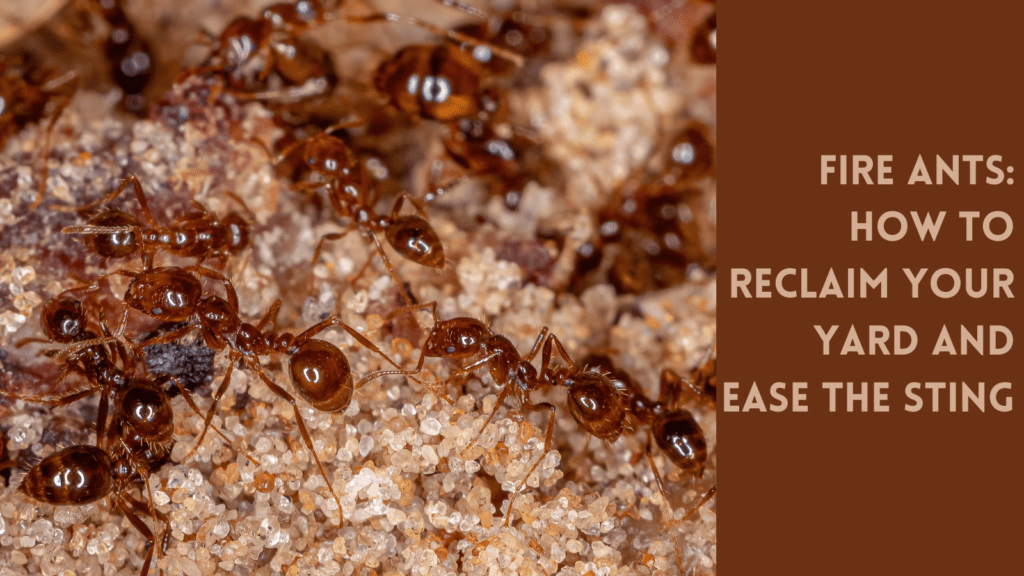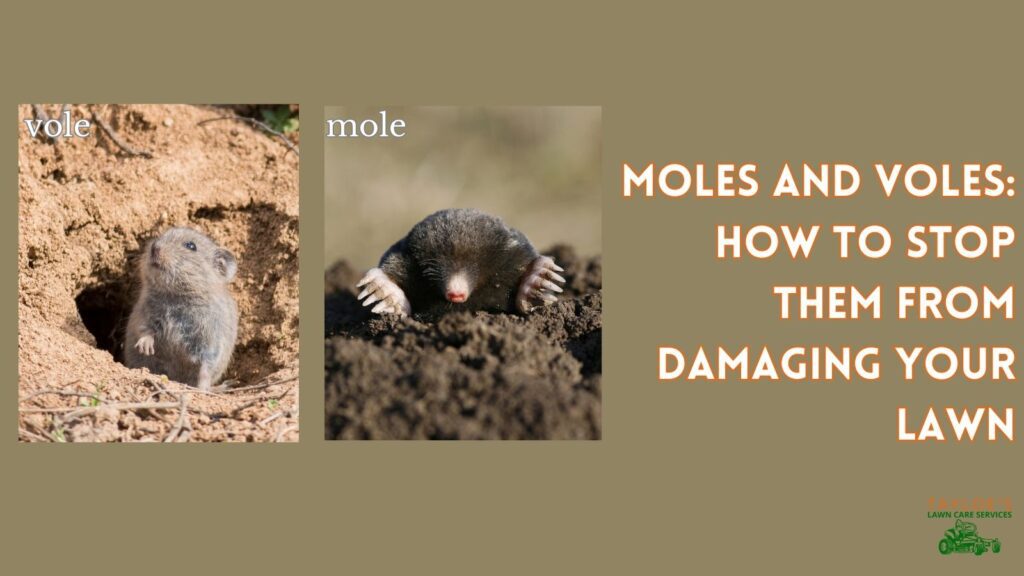Last Updated on: 9th February 2024, 06:50 am
What springs to your mind at the mention of “dangers of ticks?”
These tiny, unassuming creatures, often hidden in your backyard or favorite hiking trails, pose a real threat to both you and your furry friends. But the dangers of ticks go further than that.
In this post, we’re not just talking about a mild annoyance; we’re looking into the serious risks ticks carry – from Lyme disease to other less-known but equally concerning illnesses.
But here’s the good news: you can arm yourself with knowledge and practical strategies to protect your family and pets. We’ll cover everything from identifying tick hotspots to effective removal techniques.
Wondering how to keep your outdoor adventures safe and enjoyable, free from the worry of these pesky critters?
Let’s dive right in and uncover the critical facts you need to know to outsmart the dangers of ticks.
Tick Territory: Decoding Their Favorite Hangouts
Imagine this: a tick, no larger than a sesame seed, nestled in the lush greenery of your garden, biding its time.
These critters are stealthy, preferring undisturbed areas like long grass, bushy vegetation, and leaf piles. They await their next host – perhaps you or your pet – to latch onto.
But it’s not just wild or unkempt areas that attract them. Even well-maintained yards can harbor ticks if they border wooded areas or fields.
And their reproduction? Remarkably efficient.
In the quiet corners of your garden, a female tick can lay thousands of eggs, each a tiny time bomb set to hatch and start a new cycle of feeding and growth.
This fact underscores an essential truth: every undisturbed nook in your yard could be a cradle for the next generation of ticks.
Tick Dangers: Unmasking the Health Threats
Ticks are more than just a nuisance; they are a conduit for disease.
Lyme disease, the most widely known tick-borne illness, can lead to chronic symptoms if left untreated, including joint pain, fatigue, and neurological problems.
But the threat doesn’t stop there. Ticks can also transmit other diseases like Anaplasmosis, Babesiosis, and Ehrlichiosis, each carrying its own set of symptoms and risks.
These diseases can be particularly insidious because their symptoms might not appear immediately, or they can mimic other common illnesses.
It’s critical to be aware of any changes in health following a tick bite, both for you and your pets.
Timely detection and treatment are vital for a positive outcome.
Proactive Defense: Your Tick Prevention Playbook
The best fight against ticks is a good defense.
When you’re heading into areas that might be tick-infested – think hiking trails, camping grounds, or even your garden – gear up.
Light-colored clothing helps you spot ticks more easily. Long pants tucked into socks might not win any fashion contests, but it’s a tick-deterring tactic.
For an added layer of protection, consider treating your clothing with permethrin, an insecticide that repels and kills ticks.
Don’t forget about your pets. Regular application of vet-approved tick prevention treatments is crucial.
And after outdoor adventures, make it a habit to do a thorough tick check on yourself, your kids, and your pets.
Tick Extraction: Mastering Safe Removal Methods
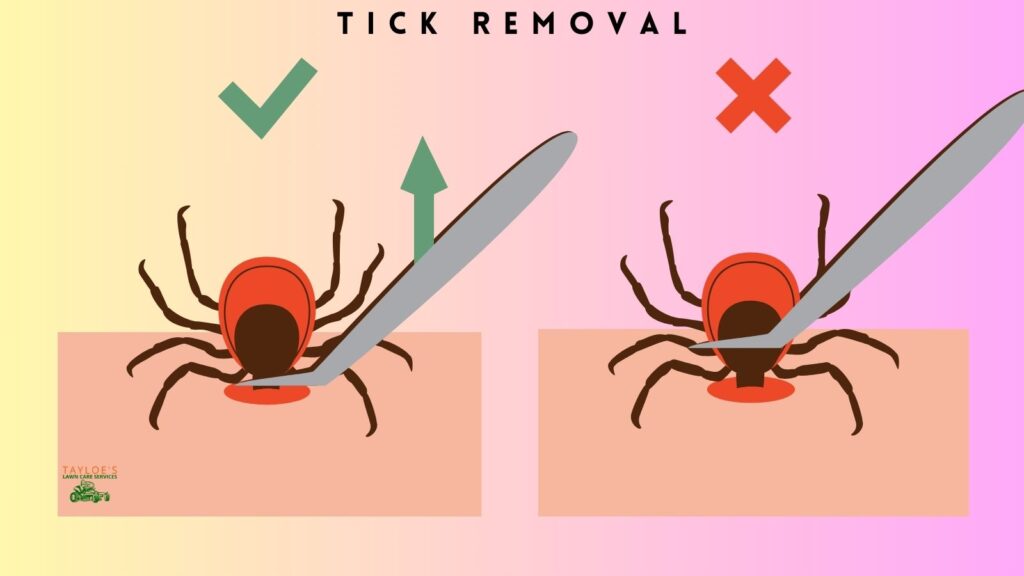
Found a tick on you or your pet? Don’t panic.
Using fine-tipped tweezers, gently grasp the tick as close to your skin’s surface as possible. Pull upwards with steady, even pressure.
Avoid twisting or crushing the tick, as this can cause the mouth-parts to break off and remain in the skin. According to NC State University, you should use tweezers to remove any mouth-parts that remain in the skin completely.
After removal, cleanse the area with an antiseptic. Dispose of the tick by sealing it in a bag or container, securely wrapping it with tape, immersing it in alcohol, or flushing it down the toilet.
Never crush a tick with your fingers.
Remember, avoiding folk remedies like painting the tick with nail polish or using heat to make it detach is crucial; these methods can cause the tick to discharge more infectious material into the wound.
Guarding Your Greens: Fortifying Your Yard Against the Dangers of Ticks
Transforming your yard into a tick-resistant zone is a multi-faceted approach.
Begin with landscaping strategies. Keep grass cut short and prune bushes and trees to let in more sunlight, as ticks thrive in shady, moist environments.
Clear out leaf litter and consider creating a buffer zone of wood chips or gravel between your yard and wooded areas–especially if it borders wooded areas or fields–to help reduce the likelihood of tick migration into your outdoor living spaces.
And if you have play equipment, decks, or patios, place them away from yard edges and trees.
If you reside in heavily wooded areas, professional pesticide applications can be an effective tick management strategy for several reasons:
- Expertise: Customized solutions for your specific yard environment.
- Safety: Safe application of treatments, considering children and pets.
- Effectiveness: Access to more potent treatments for better results.
Natural alternatives, such as beneficial nematodes or certain plant-based repellents, are also great at reducing tick populations.
Bite Back: Identifying and Responding to Tick Bites
Recognizing a tick bite promptly can be a game-changer.
A tick bite often appears as a modest red spot akin to the mark of a mosquito bite. However, Lyme disease is often associated with a distinctive bullseye rash.
Not everyone develops this rash, and other tick-borne illnesses might not produce noticeable symptoms immediately.
If you’ve been bitten, monitor the site for changes and watch for symptoms like fever, fatigue, joint pain, or muscle aches over the following weeks.
If any symptoms develop, especially after known tick exposure, consult a healthcare professional.
For pets, watch for atypical behavior or signs of illness and consult your vet.
Tick Talk: Separating Myths About the Dangers of Ticks from Reality
Myths about ticks abound, but let’s set the record straight.
One common myth is that ticks jump from trees onto their hosts. In reality, ticks typically climb onto their hosts from the ground or low vegetation.
Another myth is that a tick head left in the skin after removal will continue to transmit disease.
While it’s important to remove the entire tick, the risk of disease transmission decreases significantly once the body, which contains the salivary glands where pathogens reside, is removed.
Being informed means you can focus on effective prevention and response strategies.
You’ve Got This: Overcoming the Dangers of Ticks
Armed with the essentials to tackle the dangers of ticks, the path to a safer outdoor environment is clear.
Imagine stepping into your garden or wandering your favorite trails now with the confidence that you’re equipped to handle these tiny threats.
Your journey through understanding tick habitats, lifecycles, and the diseases they carry empowers you to take effective action.
From vigilant yard maintenance to mastering tick checks and removal, every step you take is a move towards safeguarding your loved ones and furry friends.
Remember, you’re not alone in this battle.
If you ever feel overwhelmed or require expert guidance, Tayloe’s Lawn Care Services is here to help. We understand ticks’ challenges and are committed to delivering solutions that keep your spaces safe and enjoyable.
Reach out to us – let’s work together to ensure your outdoor experiences remain tick-free.
Step into your newfound role with confidence.
Your actions today are pivotal in creating a secure, tick-free tomorrow.
Awareness and action are your greatest allies in this fight against the dangers of ticks.
Author Profile

- Maureen Abuor
- Maureen Abuor is a professional content marketing strategist and SEO strategist, with particular knowlege of creating landscaping and gardening content that informs and delights her audience. When she's not working, she's a busy mother of three precious little ones and child of God.
Latest entries
 Lawn CareApril 29, 2025Best shady area grass seed for Eastern NC
Lawn CareApril 29, 2025Best shady area grass seed for Eastern NC GardeningApril 15, 2025How do I make organic soil for the garden?
GardeningApril 15, 2025How do I make organic soil for the garden? Flower GardenMarch 7, 2025What are wave petunias?
Flower GardenMarch 7, 2025What are wave petunias? Flower GardenMarch 3, 202520 Full-sun annuals for your spring and summer garden
Flower GardenMarch 3, 202520 Full-sun annuals for your spring and summer garden

